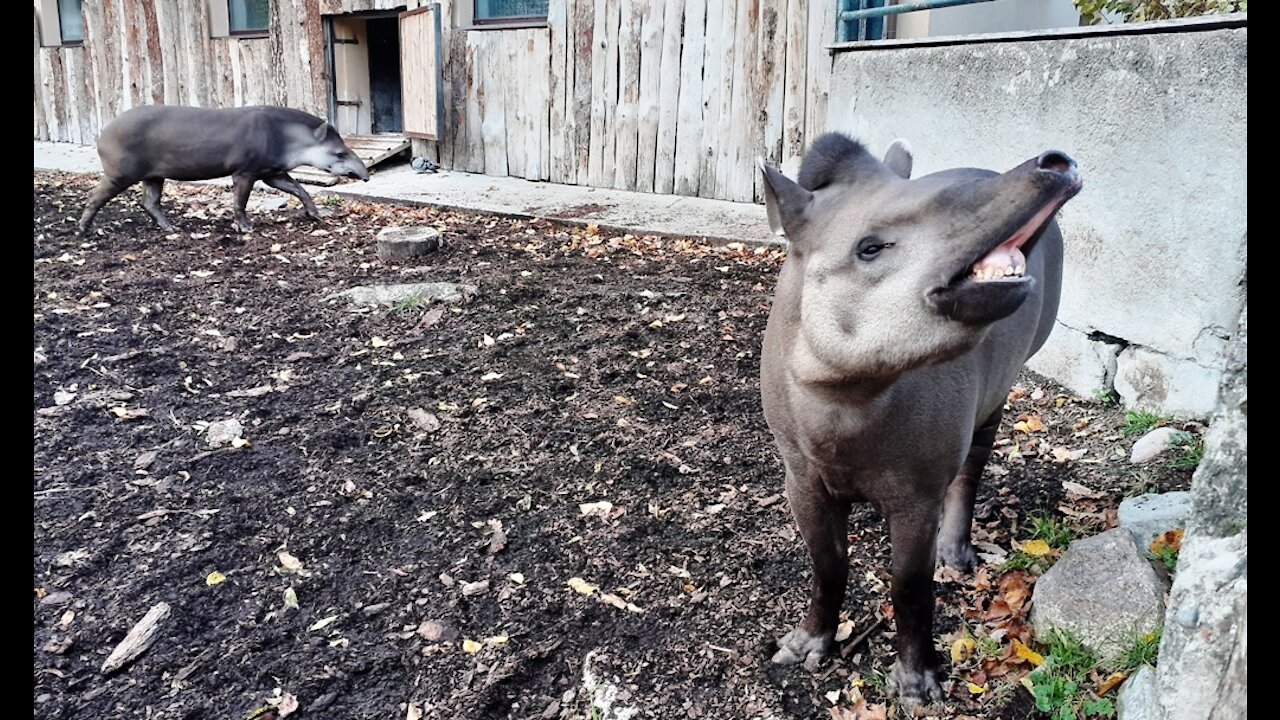Premium Only Content

Relationship between the tapirs
Relationship between the tapirs. Tapir – a relic of the beast
Over the past thirty million years, the appearance of the tapir has not changed much, and today it is very similar to the ancient ancestors – its own and horse. In some ways it resembles a rhinoceros, but in some ways it also resembles a horse. The tapir has hooves on three – toed (hind) and four-toed (front) legs-almost equine (similar even in microscopic details). And there are calluses on the legs, below the elbow joint, similar to horse chestnuts. The American tapir has a small mane on its neck. More mobile than a horse, the upper lip is elongated into a small proboscis. Tapirs will be born in the dress in which the ancestors of many animals apparently walked: light intermittent stripes stretch along the dark background of the skin from head to tail. The legs are also painted.
In pre-glacial times, tapirs were found in Europe, North America and China. But now only in South America (three species) and in South Asia (Malaya, Burma, Thailand, Sumatra) – one species survived.
In America, there are three types of tapirs: Mexican (from Southern Mexico, to Ecuador), Brazilian (from Colombia to Paraguay) and mountain, or woolly (Andes of Colombia and Ecuador), The first two have a small standing mane on the neck, like wild horses and donkeys.
Tapirs are still plentiful in the low-lying, swampy forests of South America. Dense thickets, traversed only by the intricate paths of tapirs, hide these timid animals. They are not afraid of big rivers and swim well. But in the water, crocodiles spoil their lives (and predatory fish piraya), and on the shore-jaguars and hunters from Indian tribes.
If you liked my videos, subscribe to my channel, we have a lot of interesting things ahead of us.
-
 0:57
0:57
World around us
3 years agoAmerican Staffordshire Terrier. Perseverance to achieve the goal
44 -
 24:44
24:44
SongForIsrael
4 years ago $0.05 earnedThe Relationship Between Jews and Gentiles
119 -
 0:22
0:22
khaledbell
4 years agoA relationship of love and tenderness between two poles rarely found between humans
7141 -
 1:01
1:01
Buzzvideos - EN
5 years agoThe love–hate relationship between animals and mirrors
45 -
 2:33
2:33
KGTV
5 years agoThe relationship between a dog and its owner
20 -
 0:58
0:58
Newsy
5 years agoRelationship Between Prosecutors And Police May Be Changing
964 -
 1:20:16
1:20:16
SaintsEdwardMedia
4 years agoThe Michael Sisco Show w/Endeavour - On The Relationship Between Marxists & Progressives
57 -
 8:45
8:45
AFV
4 years agoRelationship Goals
199 -
 1:14
1:14
Craig E. Richardson, MA
4 years agoRelationship Strategies
26 -
 LIVE
LIVE
The Big Mig™
2 hours agoViolence & Burning The U.S. Flag, Democrats New Battle Cry
5,171 watching